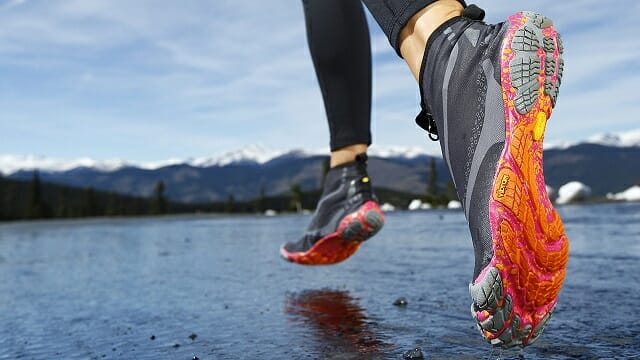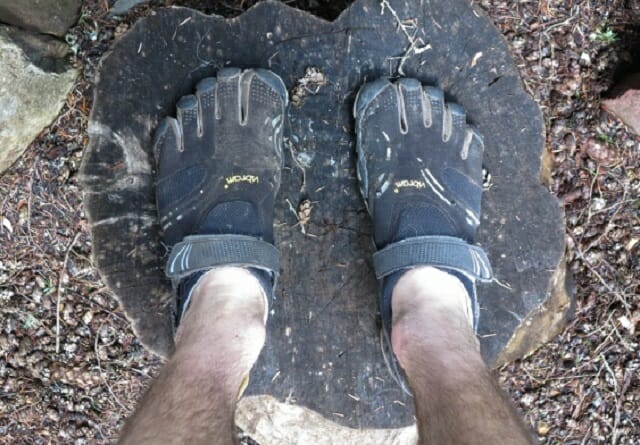Barefoot running revisited

After a long winter season in ski boots, it feels great to give your feet some breathing room. But as supple and comfortable running shoes are these days, they still can feel like prisons for your feet. So should we start running our flip flops and Teva sandals? I think not…
There has been no bigger hype in the footwear industry in recent years than barefoot running. This, in turn, has ignited debate, funded scientific studies — with various results — and every big player in the running shoe industry, including Nike and New Balance, have all cashed in for their share of the pie.
For those who are not familiar with the barefoot running concept, here is a great YouTube video from professor Daniel Lieberman from the Department of Human Evolutionary Biology at Harvard University. To put it simply, running barefoot shortens the stride and forces the runner to land on their midfoot, effectively eliminating heel strike. This differs from modern running shoes that cushion the impact in the lower joints of the body (ankle, knee and hip) as a result of the heel strike.
Since running in actual bare feet is far from practical in urban environments with all the stones, broken glass, dog poop and other surprises, the FiveFingers are designed to allow the natural feeling of the foot whilst protecting it. The sole is around 2 – 3 mm thick and flexible enough to allow natural barefoot movement.
I’ve worn through a pair of FiveFingers Komodo Sport over a couple of summers and the first time I had these strange-looking gloves on my feet I couldn’t help but feel a bit weird. After years of socks and shoes, my toes were now individually wrapped in rubber and synthetic mesh. Walking in the outdoors felt so different. I had a new found awareness of the surface I was walking on, all the muscles in my feet engaging in every step, and I could feel every subtle change in the terrain.
My first two-mile run in these shoes was a mix of pavement, gravel and a soft mountain bike trail with occasional rocky outcroppings. With the awareness that I mentioned earlier, I was a lot more careful about where my feet landed, particularly off road. With the thin soles, FiveFingers are not really designed to run in rough terrain.

I had to slow down in rocky areas and gravel pits to avoid stone bruising, however, the soft, loamy dirt of the mountain bike trail did feel amazing under my feet. There are models of FiveFingers with more protection under the ball of the foot and the toes, so only buy the thin ones if you’re sticking to pavement or smooth, machine-groomed trails.
There is no shortage of skeptics out there that have been attacking barefoot running as a marketing fad full of misused facts and omitted results (and the company recently settled a class-action lawsuit for $3.75 million that alleged it made false claims about the benefits of its FiveFingers shoes) but the best advice I can give is to try them and see if they work for you.
After six months in ski boots I long for freedom for my toes, but I can’t run with my dog in flip flops.


